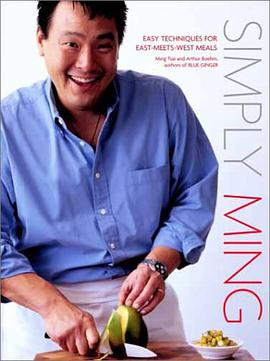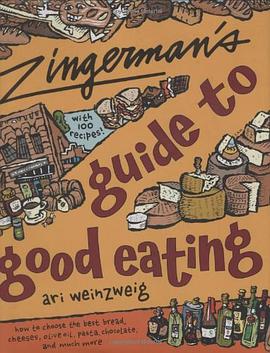

具体描述
From Publishers Weekly
In this exhaustive and sometimes exhausting book, Swinchatt and Howell take on the Herculean task of explaining how the "topography, bedrock, sediments and soils, temperature and rainfall"—that is, the terroir—of Napa Valley affect the taste of its famous wines. The authors’ previous books (The Foundations of Wine in the Napa Valley and Principles of Terrane Analysis) were solid preparation for the difficulty of unraveling this mystery. But the complexity of terroir nonetheless requires painstaking (and passionate) consideration of myriad geological, biological and cultural factors. Everything—the intensity of sunlight, the slope of hills, the length of shadows, the impact of different woods on the wine aging in barrels—comes under the authors’ examination. There is even an extensive presentation of Napa’s geological back-story—145 million years of subduction, shifting tectonic plates and magma flows. Puzzling through this intricate matrix of influences are the winemakers themselves, who, the authors say, work with the land in a delicate "dance." Sidebars offer sage advice on everything from "organizing a structured tasting" to "Pierce’s disease and the glassy-winged sharp-shooter." And the book lays out two wine-tasting tours through the different parts of the Valley with recommended stops at several wineries. Swinchatt and Howell pursue their topic with patience and profound attention to detail, and their writing is generally earnest and sharp. Though general readers may be daunted by the sheer density of this book’s scientific information, even a quick flip through its many maps, photographs and diagrams can be tremendously informative.
Copyright © Reed Business Information, a division of Reed Elsevier Inc. All rights reserved.
From Scientific American
Time was when Americans in Britain would be sternly corrected were they to use the term "English" when what they really meant was "British." These days the British themselves are no longer sure which is which. Yet one distinction still rises above all ambiguity, and its identity might be surprising--wine. "British" wine is made in Britain from imported grapes. "English" wine, in contrast, is a handcrafted, homegrown product. The distinction should be clear: whereas British wine is made without reference to its place of origin, English wine is sold on its location. A sense of place is central to its image, its taste and its success. In The Winemaker's Dance, geologists Jonathan Swinchatt and David G. Howell argue that this sense of place is central to the standing and the understanding of wine from California's Napa Valley, although their contention would be just as true wherever grapes are grown and wine is made. As such, Swinchatt and Howell take what they themselves see as a controversial stand, contending that winemakers should reassert a sense of place, to buck what they see as the trend toward a homogeneous "international" style of wine, fostered by the personal tastes of a small circle of influential critics. At the heart of their thesis is an appreciation of terroir, which, like many words in French, is both untranslatable and full of meaning. Coming from the classic French tradition of winemaking, terroir means the situation in which wine is made. "At its core," Swinchatt and Howell note, "the notion of terroir refers to all the qualities that characterize place: topography, bedrock, sediments and soils, temperature, and rainfall. Some wine writers and professionals include viticultural practices, and others recognize the impact of ... the winemaker." Terroir is not an object, then, but an epiphenomenon, an indefinable summation of the winemaker's dance, which starts with the careful selection of a vineyard and ends with the bottle on your table. The authors venture that the story of any bottle of wine starts much earlier than that, with the history of the land itself. In the words of David Jones, winemaker and geologist, "What you're tasting in a bottle of wine is a hundred million years of geologic history." Using this as the cue to take the broadest possible view of terroir, Swinchatt and Howell sketch the geologic history of the Napa Valley, starting with its origin as ocean floor squeezed up against the North American mainland 140 million years ago. Volcanoes have come and gone, rivers have woven their courses, and the weather has exacted its remorseless toll, to produce in the Napa Valley a rugged terrain of great variety in bedrock, soil and microclimate, despite its tiny size (just 40 miles long and 21 broad). For much of the book, Swinchatt and Howell show how winemakers have exploited the varied topography and climate of the Napa Valley as an expression of a characteristically American individuality. Yet they note a paradox. The finest Napa wines come from hot, water-stressed grapes clinging to marginal hillside soils, farmed by winemakers often new to the craft and therefore free to experiment. On the other hand, the classic wines of Bordeaux on which Napa wines are modeled come from cooler, more fertile lowland settings and are crafted by winemakers steeped in regulation and tradition. And yet Napa wines have ranked alongside the best that France can offer for more than a quarter of a century. The relation between quality and terroir is, it seems, not a simple one--and this is the central problem of contemporary winemaking. In crafting the best possible wine, is it better to follow the latest global fashion or remain true to the terroir that gives wine its sense of place, come what may? This is where Swinchatt and Howell might find their message controversial in some quarters. After months of exploration in Napa, interviewing winemakers and learning their secrets, they admit that their favorite wines are those that seek to harmonize all the aspects of terroir, without any one aspect becoming dominant, and that these balanced wines are, more often than not, French. With disarming frankness they admit that their most memorable drop was a 1988 Chateau Clerc Milon from Pauillac: "By no means an overpowering wine, it nevertheless stopped conversation at the table on the first mouth-filling taste and kept drawing our attention just as vividly throughout a leisurely dinner.... If the winemaker's intent is to 'let the terroir speak,' then the goal will be to balance the elements." In the adherence to a certain style of wine that tends toward aggressive fruitiness at the expense of subtlety, Napa wine risks losing its balance and possibly its way. With increasing use of technology and analysis that characterize those elements of flavor that make certain wines distinctive, it is becoming easier for a winemaker to craft any wine in imitation of any other. Were this trend to continue indefinitely, wine would lose the sense of place on which rests much of its allure and become any other foodstuff. Like no other agricultural product, wine depends on its location for its appeal. Throw the dice of time a little askew, and the Napa Valley would have been a sleepy farming community like many others, not the greatest tourist draw in California outside Disneyland. Two sections of The Winemaker's Dance are guides for visitors to the Napa Valley, pointing out which vineyards are where and--in the context of geology and topography--why. While I was reading the book, I found these sections incongruous, and I had planned to add a patronizing note that every visitor to the region should have this book in his glove compartment. I'd say so still, but for a different reason. Now that I have drained the authors' beaker of warm South to the dregs, the tourist-guide sections have an elegiac quality. Go see the Napa Valley today, before fashion drains its individuality. The Winemaker's Dance is a full-bodied book with somewhat hard-edged, granitic notes and a distinctly disturbing finish. But don't wait for it to age, for it might be too late. It's ready to read right now.
Henry Gee, a senior editor of Nature, is author of Jacob's Ladder: The History of the Human Genome (W. W. Norton, 2004) and the upcoming The Science of Middle Earth: Explaining the Science behind the Greatest Fantasy Epic Ever Told! (Cold Spring Press, 2004). (1,071)
作者简介
目录信息
读后感
评分
评分
评分
评分
用户评价
相关图书
本站所有内容均为互联网搜索引擎提供的公开搜索信息,本站不存储任何数据与内容,任何内容与数据均与本站无关,如有需要请联系相关搜索引擎包括但不限于百度,google,bing,sogou 等
© 2025 book.quotespace.org All Rights Reserved. 小美书屋 版权所有




















